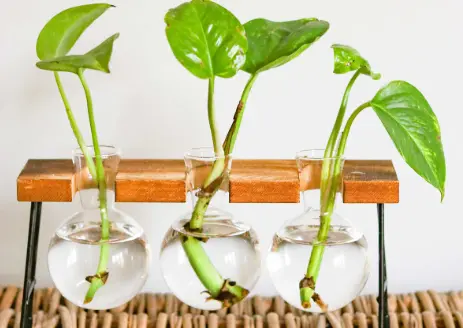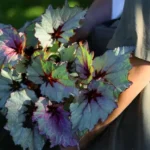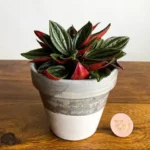Introduction to Pothos Propagation Methods
Pothos (Epipremnum aureum) is a widely beloved houseplant favored for its beautiful trailing vines, easy care requirements, vigorous growth, and exceptional indoor adaptability. One of the most rewarding aspects of owning pothos plants is their ease of propagation—making it easy for beginners and home gardeners to create more plants from a healthy parent plant. Propagating pothos in water is one of the simplest propagation techniques, making it ideal even if you have minimal experience with houseplants. This article will guide you through a detailed step-by-step approach, explaining the required tools, environmental conditions, care specifics, and timelines needed to propagate healthy and successful pothos plants in water.
Tools and Materials Needed
Before starting the propagation process, it is practical to gather all necessary tools and materials. Here’s what you’ll need:
- A healthy pothos plant (mature enough with at least several leaves per vine).
- Clean, sharp scissors or pruning shears.
- Clear glass or jar filled with clean, filtered, or distilled water.
- Soft towel or paper towel (for wiping the blade between cuts).
- Disinfectant (isopropyl alcohol or a diluted bleach solution for sterilizing scissors).
Step-by-Step Guide for Propagating Pothos in Water
Step 1: Select and Prepare the Parent Plant
Begin by carefully inspecting your pothos plant to select which vines will serve best for propagation. Opt for healthy stems showing active growth and no signs of disease or pests. Ideally, each cutting should have at least four to six leaves, with visible nodes (small knobby areas where leaves and roots sprout along the stem).
Step 2: Prepare Your Cutting Tools
Disinfect your pruning shears or scissors using isopropyl alcohol or a diluted bleach solution to minimize the risk of introducing pathogens to your pothos. Clean blades will ensure your propagation is healthy and free from infections. After disinfecting, thoroughly dry the blades with a clean towel or disposable paper towel.
Step 3: Take Your Cuttings
Cut each selected vine approximately 4–6 inches (10–15 cm) long, ensuring every cutting includes at least two or three leaves and two nodes. Nodes are essential for root production and are easily recognizable as swollen points along the stem from which leaves and roots emerge. Always make a clean, angled cut at about ½ inch (1.3 cm) below a node. This angled cut maximizes the possibility of water absorption and root development.
Step 4: Remove Lower Leaves
Carefully remove any lower leaves from the bottom portion of the cuttings, as these could rot when submerged in water. Ensure that at least two to three leaves remain at the top of each cutting. Removing lower leaves gives clear access to the node area, increasing the likelihood of rapid root development.
Step 5: Position Cuttings in Water
Place the prepared pothos cuttings into a clear glass or jar filled with room-temperature filtered or distilled water. The water level should be sufficient to submerge at least one node entirely. Keeping nodes consistently underwater encourages effective root growth. Avoid overcrowding by only including three to five cuttings per container to maintain water freshness and airflow.
Step 6: Provide Ideal Conditions for Root Growth
Pothos cuttings thrive under specific environmental conditions. Optimal conditions significantly increase your chances of success and encourage faster, healthier root growth:
- Light: Indirect bright sunlight is best, around 10,000–15,000 lux. Bright indirect light encourages rapid and healthy root formation while preventing the risk of leaf scorching or stress.
- Temperature: Maintain a consistent ambient temperature between 65–80°F (18–27°C). Temperatures outside this range may cause slower root growth or stem rot.
- Humidity: Average household humidity between 40% and 60% is sufficient; pothos is adaptable to standard indoor environments.
- Water Quality: Maintain clear, clean, chlorine-free water at all times—refresh the water every 5–7 days regularly, or immediately if water appears cloudy. Replacement prevents algal growth and reduces bacterial contamination.
Step 7: Monitor Root Growth
Within approximately 2–4 weeks you will begin observing small white roots emerging from the submerged nodes. Healthy pothos roots should appear pale, firm, and bright white in color. Routinely inspect the cuttings for any signs of rot or fungus—promptly remove unhealthy specimens from the propagation area.
Step 8: Transition from Water to Soil (Optional)
Once roots are well-developed (typically 2–3 inches, or 5–7 cm in length), you may choose to transfer your pothos into soil for continued growth as a soil-planted houseplant. To successfully transition pothos:
- Select a well-draining houseplant potting mix.
- Plant your rooted cuttings approximately 2 inches (5 cm) deep into soil, carefully avoiding damage to fresh roots.
- Water the pothos thoroughly after planting, keeping the soil uniformly moist initially to help reduce transplant shock.
- Maintain standard pothos care routines to ensure stable, long-term growth and health.
Common Issues and Solutions in Pothos Propagation
Slow or No Root Growth
- Ensure nodes remain submerged, check water quality weekly, and maintain proper indirect bright lighting conditions.
- Increase ambient temperature to 70–75°F (21–24°C) range if growth is stagnant.
Stem or Leaf Rot
- Use sterilized cutting instruments to prevent infections.
- Regularly change water weekly and remove rotting tissue or infected cuttings immediately upon discovery.
- Avoid fully immersing leaves underwater.
Algae Build-Up in Jar or Glass Container
- Use opaque containers or cover clear glass in paper or fabric to prevent excessive brightness and algal growth.
- Maintain consistent water changes every 5–7 days and clean containers to limit algae and fungal issues.
Benefits of Propagating Pothos in Water Compared to Other Methods
Water propagation offers several advantages over traditional soil-based pothos propagation methods:
- Visibility of Root Growth: Clear containers let you closely observe and track root development, allowing early action if problems arise.
- Simplicity for Beginners: The water-based method significantly reduces risk, making the technique accessible for new gardeners employed as a learning experience.
- Cost-Effectiveness: Requires minimal initial investment and no specialized gardening supplies; common household items suffice.
- Less Risk of Disease or Pest Contamination: Controlling water quality and vessel hygiene sharply lowers infections and pest problems.
Conclusion
Propagating pothos plants in water is an easy, efficient, and cost-effective approach suitable even for beginner plant enthusiasts and home gardeners. By following each step clearly, providing optimal environmental conditions, and routinely monitoring the water quality, your pothos plant will thrive and rapidly root—generally in just 2–4 weeks. Both indoor gardening novices and more experienced houseplant lovers will benefit considerably from the tried-and-true water propagation method, allowing them to economically expand their pothos collections and improve their indoor gardening skill set.
References
- Whiting, D., O’Meara, C., & Wilson, C. (2015). Propagating houseplants. Colorado State University Extension. https://extension.colostate.edu/topic-areas/yard-garden/propagating-houseplants-7-218/
- Hartmann, H. T., Kester, D. E., Davies Jr., F. T., & Geneve, R. L. (2017). Plant propagation: Principles and practices (9th ed.). Pearson.
- Morgan, L. (2020). The beginner’s guide to houseplant propagation. Timber Press.








